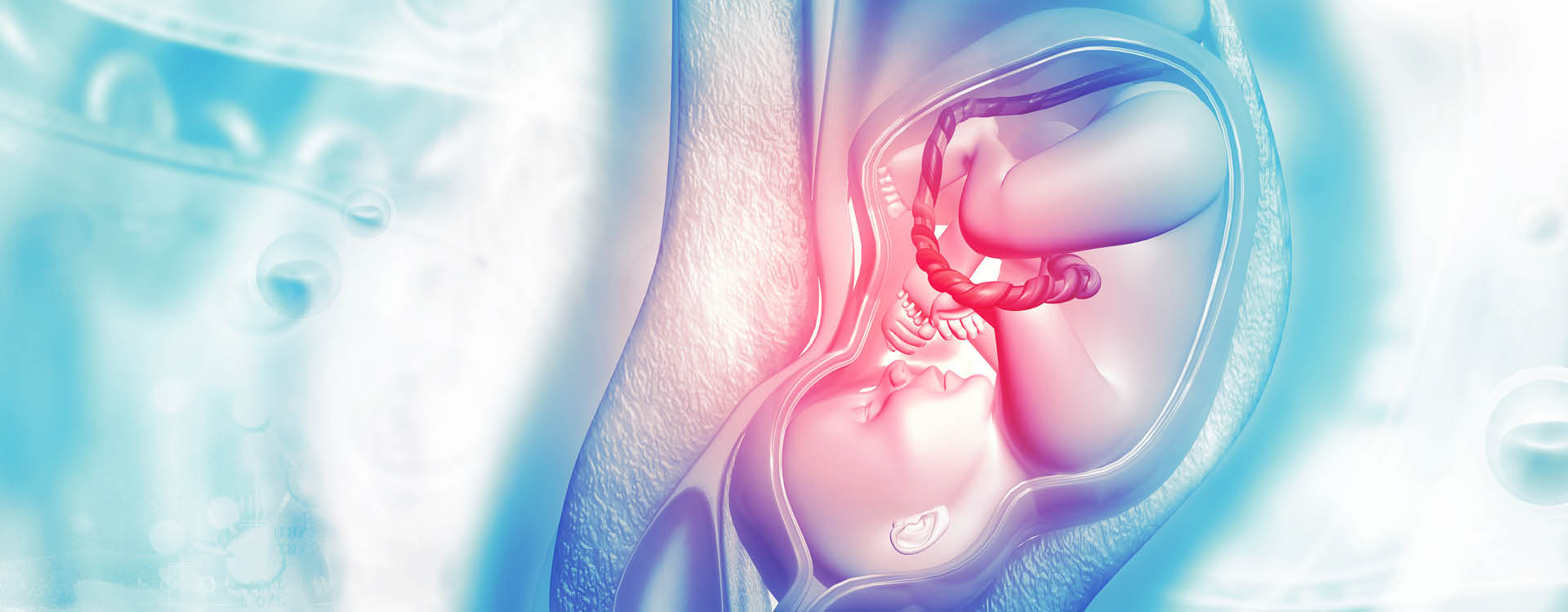Hypertensive disorders among pregnant women are on the rise in the U.S.: From 2000 to 2009, the rate of maternal chronic hypertension increased by 67% overall, with the largest increase (87%) among African American women. It rose another 3% between 2017 and 2019, from 13% to 16%, and now affects at least 1 in 7 delivery hospitalizations [*].
Researchers believe this rise will continue and may be attributed to the obesity epidemic and increasing maternal age, two key risk factors [*].
Here is what we know about the symptoms, treatment, probable causes, and risk factors for preeclampsia, eclampsia, and the spectrum of blood pressure and vascular disorders that occur during pregnancy and after.
Preeclampsia vs. Eclampsia
Both preeclampsia and eclampsia are hypertensive disorders that affect 10% of pregnancies worldwide. If left untreated, preeclampsia can lead to eclampsia, which is marked by vascular disease that causes convulsions or coma, but not all cases of eclampsia are preceded by preeclampsia [*].
What Is Preeclampsia?
The spectrum of hypertensive disorders that occur with pregnancy begins with gestational hypertension, followed by preeclampsia, eclampsia, and HELLP syndrome, in order of severity.
Gestational hypertension is diagnosed when a mother who previously had normal blood pressure develops elevated blood pressure after 20 weeks of gestation and it returns to normal within 3 months following delivery. It usually occurs without other symptoms and doesn’t harm the mother or fetus, but when it’s severe, it can lead to preterm birth or small-for-gestational-age babies. Gestational hypertension can lead to preeclampsia [*].
Like gestational hypertension, preeclampsia is diagnosed when a mother with no previous blood pressure disorder develops high blood pressure after 20 weeks of pregnancy at higher than 140/90 mmHg. Common symptoms of mild preeclampsia include swelling in the arms, hands, face, or body (from retaining fluid) and protein in the urine. Protein in the urine is not necessary to diagnose the hypertensive condition as preeclampsia but it is uncommon for a woman to have preeclampsia without it.
Preeclampsia is diagnosed as severe when the mother either has a blood pressure of 160/110 mmHg or higher and protein in the urine or when she has a blood pressure of 140/90 mmHg or higher with other symptoms that may include:
- Severe headaches.
- Vision issues like oversensitivity to light, blurred vision, flashing spots, or auras.
- Shortness of breath or burning behind the sternum.
- Nausea or vomiting.
- Abdominal pain, usually upper quadrant.
- Reduced urine output.
- Fluid in the lungs.
- Protein in the urine.
- Signs of HELLP syndrome — a serious condition marked by liver and blood clotting dysfunction.
HELLP syndrome occurs in 10% of patients with severe preeclampsia. HELLP stands for Hemolysis (damaged red blood cells), Elevated liver enzymes (indicating ongoing liver damage), and low platelets (cells that help blood clot).
Preeclampsia affects 3%-7% of pregnant women and is one of the leading causes (15%) of preterm birth [*].
As many as 1 in 4 cases of preeclampsia develop postpartum, most often within the first two days after birth but sometimes up to 6 weeks later. Sometimes preeclampsia worsens or is only first recognized after delivery. In one emergency room study, 55% of the women diagnosed with postpartum preeclampsia had not been diagnosed with it during the pregnancy [*].
What Is Eclampsia?
When the mother’s vascular disease impairs brain function, causing seizures or even coma, the condition is diagnosed as eclampsia. About one-third of eclampsia cases occur postpartum. 30-50% of patients with eclampsia also have HELLP syndrome.
The classifications widely used for maternal hypertensive disorders have been in place since 1972 but they can be really confusing. The overlap in symptoms between gestational hypertension, preeclampsia, eclampsia, and HELLP syndrome has led one researcher to call for a simpler, more uniform classification: Vascular Disorder of Pregnancy (VDP) [*].
While we tend to think of high blood pressure as being the first indication of preeclampsia, in clinical practice, hypertension is not always present first or second in the disease process. The effect of the vascular disorder in other systems or organs (like the brain, liver, or kidneys) may manifest earlier than hypertension [*].
So, while we tend to think of preeclampsia as a precursor to eclampsia, that is not always the case. A mother could be diagnosed with eclampsia without ever having been diagnosed with preeclampsia — and without yet having high blood pressure — where a maternal vascular disorder has caused her to have seizures or coma.
What Are the Risks of Preeclampsia and Eclampsia?
Severe preeclampsia can cause dangerous complications for mother and baby, including eclampsia and a higher risk of stroke while pregnant and after delivery. Women with preeclampsia are also at elevated risk for damage to critical organs like the liver and kidneys as well as the brain and blood systems. It may also lead to separation of the placenta from the uterus (placental abruption), preterm birth, miscarriage, or stillbirth.
For the fetus, a lack of oxygen and nutrients — stemming from restricted placental arteries — can impair fetal growth, triggering a number of adverse health outcomes [*]. Infants whose mothers had preeclampsia, even if they were born full term, are at increased risk for later problems [*].
In developed countries, most women survive preeclampsia, but globally, the mortality is much higher [*]. Preeclampsia and eclampsia cause 14% of maternal deaths each year, or 50,000-75,000 women globally, according to WHO [*]. Preeclampsia is the leading cause of maternal and infant illness and death [*].
Delays in diagnosis or management, as well as access to medical care, are critical factors.
What Causes Preeclampsia and Eclampsia?
The cause or causes of these vascular disorders are not definitively known, but researchers are getting closer to understanding the mechanisms at their root.
Preeclampsia was once thought to be caused by a blood toxin, dubbed “toxemia,” but care providers now know that is not the case.
Recent research suggests that preeclampsia occurs when the placenta does not anchor itself as deeply as expected to the uterine wall in the first trimester. This in turn leads to abnormalities in the formation of the placenta that restricts blood flow and tightens arteries, raising the mother’s blood pressure. These stressed arteries can also leak protein or fluid, causing tissues to swell. These arterial changes also decrease the blood supply to the placenta and the fetus in preeclampsia, as well as to the mother's kidneys, liver, eyes, brain, and other organs.
What causes the placenta to fail to anchor properly is unclear, but researchers are looking closely at genetic factors, environmental exposures, the mother’s immune system, and pre-existing medical conditions such as diabetes or high blood pressure, among other things.
Who Is Most at Risk for Preeclampsia and Eclampsia?
While preeclampsia mostly occurs in first pregnancies, women who have had preeclampsia in an earlier pregnancy are seven times more likely to develop it again [*]. This preponderance to repeat is even higher among African American women [*].
Other risk factors include:
- Obesity. This also makes a woman more likely to have repeat preeclampsia.
- Maternal age over 40 (or under 20).
- Pregnant with twins or multiples.
- Family history of preeclampsia.
- Preexisting medical issues including chronic hypertension, kidney disease, diabetes, and autoimmune disease.
- The presence of antiphospholipid antibodies, commonly (but not exclusively) found in people with lupus [*][*].
- An interval of 10 years or more in between pregnancies [*].
- Pregnancy resulting from egg donation, donor insemination, or in vitro fertilization.
How Can I Tell If I Have Preeclampsia or Eclampsia?
Preeclampsia is common and your doctor or midwife will likely be on the lookout for it. But it can be hard to detect on your own.
The symptoms of preeclampsia are not always pronounced enough to be noticeable so it’s important to schedule regular prenatal visits before it gets out of hand — which can happen in a matter of days or even hours.
It’s especially hard to detect preeclampsia in women who had chronic high blood pressure going into pregnancy. When this occurs, doctors refer to it as “superimposed preeclampsia.”
Unfortunately, there is no single blood test that can indicate preeclampsia, although blood tests that reveal kidney or liver dysfunction may be performed. Doctors will also perform blood tests to check platelet levels and blood clotting factors. Vascular disorders are at the root of both preeclampsia and eclampsia.
A new urine test, the Congo Red Dot test, has shown promise in diagnosing preeclampsia as well by tagging protein in the urine [*].
On top of this, your care provider should assess the size of the fetus via ultrasound, check its heart rate, and perform a physical exam to assess any swelling, abdominal tenderness, or enlargement of the liver.
Your care provider will also look for elevated blood pressure and protein in the urine, fluid build-up, or both.
If you’re experiencing symptoms such as swelling in the face or body, nausea, headaches, vision changes, abdominal pain, reduced urine output, or trouble catching your breath, see your care provider immediately or get to an emergency room.
Whether preeclampsia is diagnosed as mild or severe depends on the symptoms and how high the mother’s blood pressure is. If it’s 140/90 mmHg with swelling and protein in the urine, it may be classified as mild. If the blood pressure is 160/110 mmHg or higher with additional symptoms as noted above, then it’s considered severe.
If the mother is experiencing seizures on top of these issues, doctors will likely diagnose Eclampsia.
How Are Preeclampsia and Eclampsia Treated?
The good news is, most women with preeclampsia will deliver healthy babies and fully recover.
Women who are at risk for preeclampsia may be prescribed low-dose aspirin to prevent it.
If the condition worsens, the mother may be prescribed an anti-convulsive medication such as magnesium sulfate to help prevent eclamptic seizures.
Mild preeclampsia can typically be managed with twice-weekly blood pressure monitoring, prenatal testing to monitor fetal health and disease progression, and delivery by 37 weeks' gestation.
Severe preeclampsia requires immediate stabilization and inpatient treatment with magnesium sulfate, antihypertensive drugs, corticosteroids to help accelerate the development of the baby’s lungs if less than 34 weeks' gestation, and delivery plans.
Delivering the fetus — well, actually, the placenta — is considered an acute treatment for preeclampsia, not a cure.
Why Do Women Get Postpartum Preeclampsia?
Earlier, we noted that researchers believe preeclampsia arises due to an abnormal placental attachment to the uterus, so it’s natural to think that once the placenta is delivered, the problem is resolved. But it takes some time for the uterus to shed its lining after birth, and this may be one reason for the high incidence of postpartum preeclampsia. Other times, in rare cases, preeclampsia during pregnancy goes undetected [*].
In the U.S., most maternal deaths from preeclampsia occur after the baby is born.
In fact, 10% of all maternal deaths from high blood pressure occur postpartum, possibly because this is outside the window of care for new mothers [*]. There are so many other physiological adjustments a woman’s body is making at that time, and between the sleep deprivation and the focus on the needs of the newborn, it’s easy to miss — especially when it comes on late postpartum, up to six weeks after delivery. Further, some medical practitioners are slow to recognize the high incidence of postpartum preeclampsia [*].
Postpartum preeclampsia most often presents within 48 hours after birth but there is a 6-week window in which new mothers develop it. If you have any of the symptoms of preeclampsia after giving birth — headaches, fluid retention, abdominal pain, vision changes, shortness of breath, nausea, or vomiting — it’s critical that you contact your care provider immediately. If they’re not available, get to an emergency room. Preeclampsia can become life-threatening very, very quickly.
Note, too, that with postpartum preeclampsia and eclampsia, the risk of complications may be higher than if the conditions had occurred during pregnancy [*].
Treatment for postpartum preeclampsia is the same as that used to treat preeclampsia during pregnancy.
Can You Still Save Cord Blood With Preeclampsia or Eclampsia?
Yes, although Mothers with preeclampsia have been shown to produce a lower volume of cord blood, which correlates to lower TNC and CD34+ cell count [*]. Part of this may be due to premature delivery, or other ethnographic or demographic factors associated with preeclampsia [*]. Cord tissue can always be saved regardless.
It’s best if our laboratory makes the determination, not your care team. If you do try to collect cord blood or tissue and our lab determines that the sample is not viable for storage for any reason, you will not be charged for our services. Only a $200 deposit that is billed at the time of enrollment is non-refundable, as that covers the costs associated with the medical supplies in our StemCare® Collection Kit and shipping fees.
The Bottom Line
Preeclampsia and eclampsia are serious vascular disorders that doctors are seeing more and more of due to the rising incidence of risk factors like obesity, diabetes, autoimmune disorders, IVF, and maternal age over 40. They’re often part of a continuum of vascular disease progression in mothers but they can present separately as well.
While the treatment protocols are effective, it’s critical for doctors to catch and evaluate these vascular disorders, even when hypertension is not the first symptom, so they can be treated as early as possible in the disease progression.
It’s especially critical to know and recognize the symptoms of preeclampsia postpartum when you’re not being evaluated regularly by your care provider.
DISCLAIMER: THE INFORMATION ON THIS WEBSITE IS NOT INTENDED TO BE USED AS MEDICAL ADVICE.The materials and information contained on the MiracleCord website is provided for educational and informational purposes only, and is not intended to, and does not constitute, medical or other health advice or diagnosis, and should not be used as such. You should not use this information to diagnose or treat a health problem or disease. If you are seeking personal medical advice, you should consult with a licensed physician. Always consult with a qualified health care provider regarding a medical condition.




